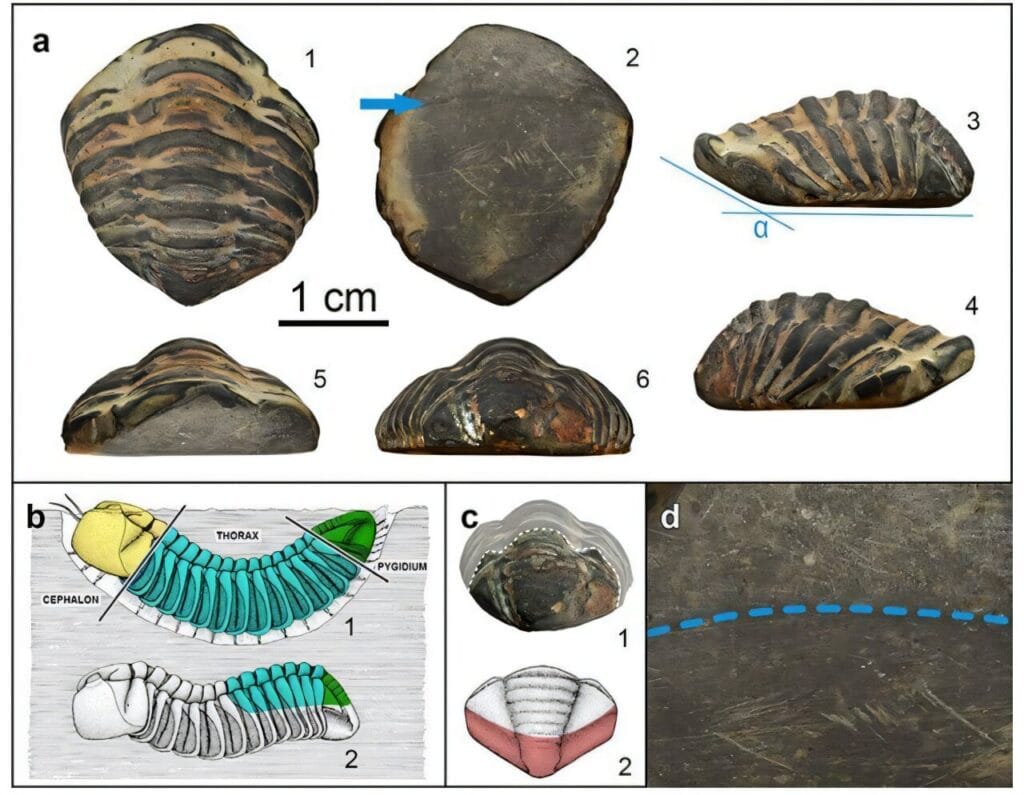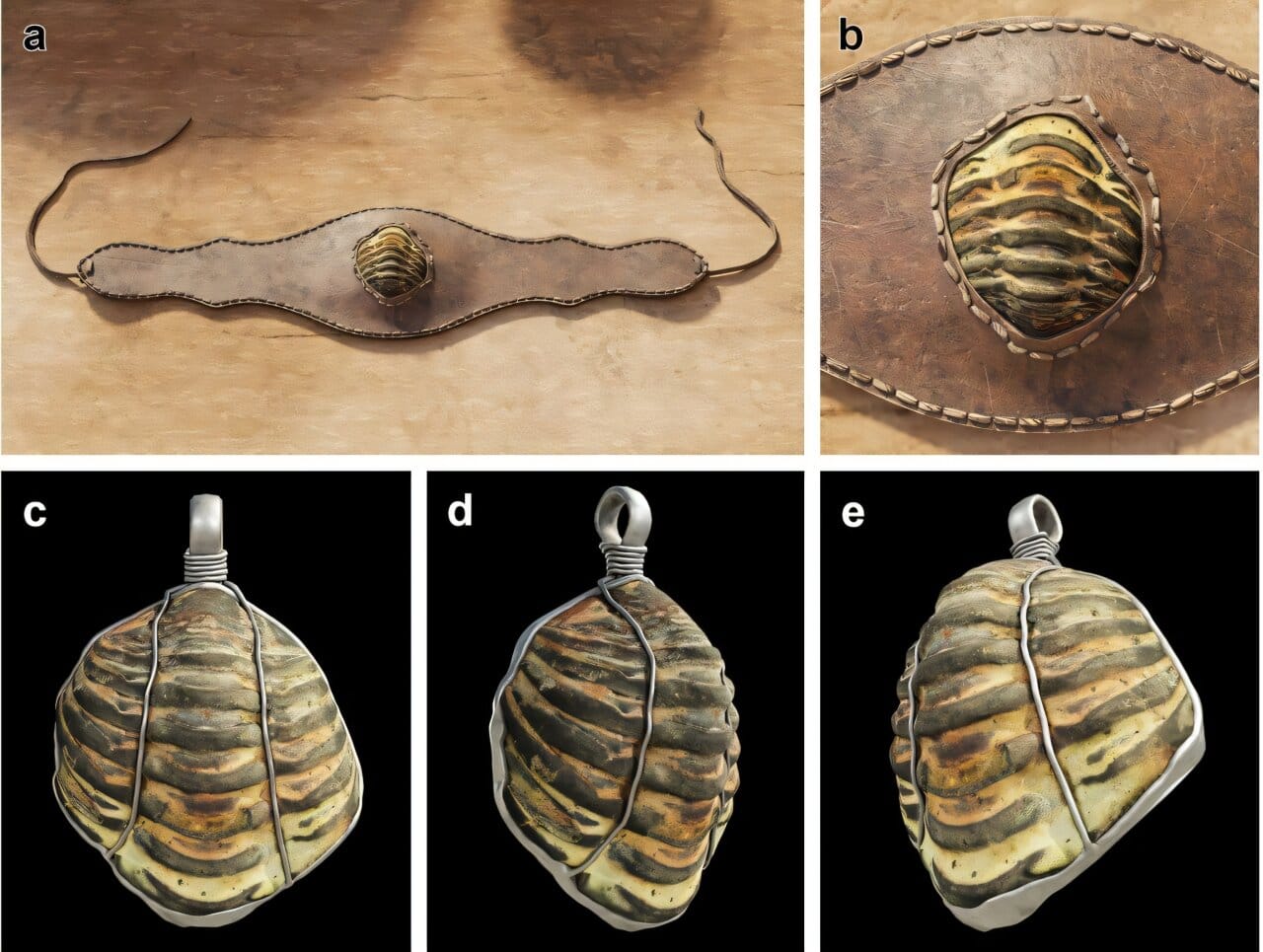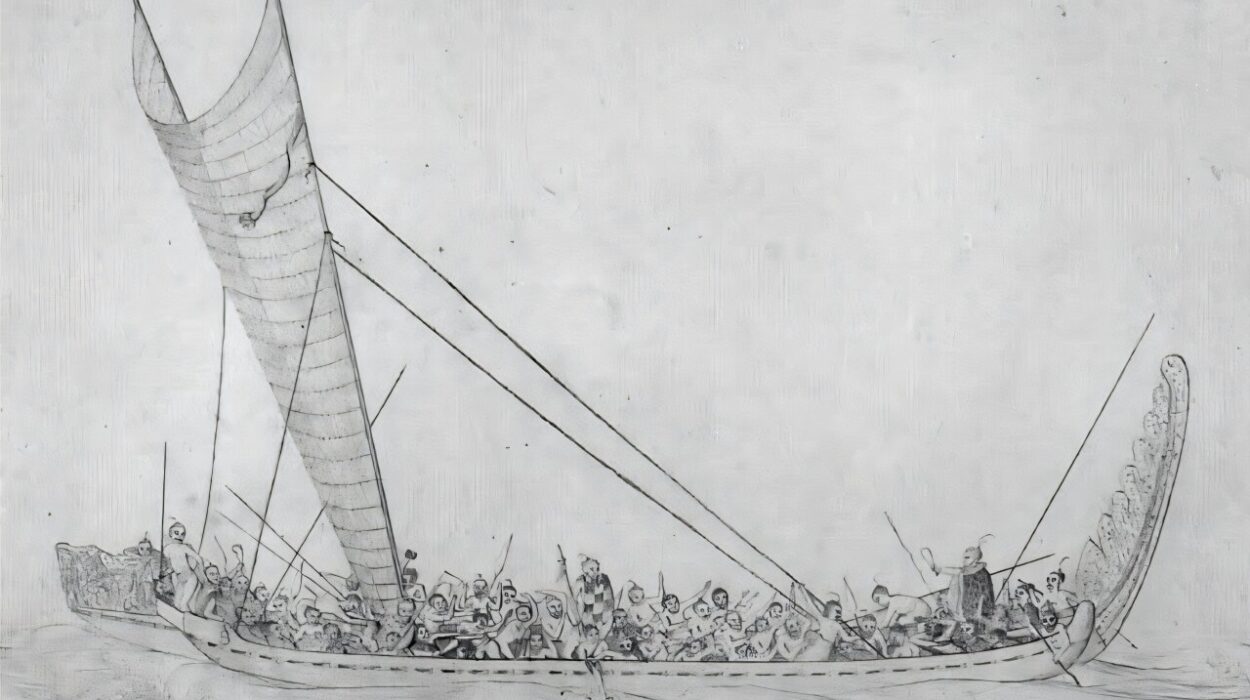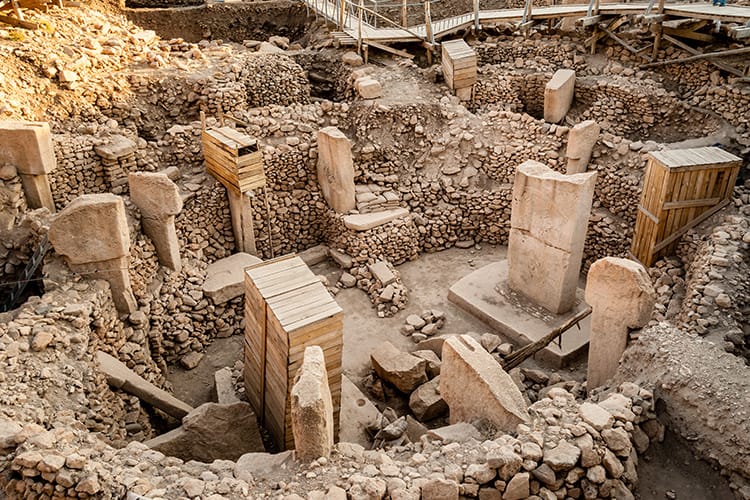On a quiet hill in northwestern Spain, where the remnants of Roman stonework still whisper stories of empire and conquest, archaeologists uncovered something unexpected—a fossil of an extinct marine creature known as a trilobite. This was not just any fossil casually trapped in the earth for millions of years. It bore human touchmarks—artificially made facets, deliberate shaping, and evidence that it was once cradled as a personal ornament, possibly a pendant or bracelet.
Dated between the 1st and 3rd centuries CE, this discovery at the Roman settlement of A Cibdá de Armea is rewriting what we know about how ancient civilizations interacted with the natural world. It is the first confirmed trilobite fossil used during Roman times, one of only three such finds ever recorded globally, and the eleventh trilobite fossil ever unearthed from any archaeological context.

This singular artifact is far more than a relic; it’s a rare bridge between deep geological time and human history—a story of how beings long vanished beneath prehistoric seas resurfaced to become objects of magic, protection, and perhaps even reverence.
The Fossil’s Journey Across Millennia
The trilobite fossil itself is extraordinary in its preservation. Identified as Colpocoryphe sp., it displays the classic segmented exoskeleton that defined these marine arthropods, which thrived and vanished hundreds of millions of years before humans walked the earth. Its two longitudinal furrows, smooth chest lobes, and proportionate rachis—the central spine running down its body—allow researchers to place it precisely in trilobite taxonomy.
Yet what makes this specimen particularly compelling is its geological story. Preserved as a natural cast, mineralized with iron oxide, it carries a reddish hue that speaks of long weathering in a land rich in iron. Its origins trace back to the southern Central Iberian Zone, nearly 430 kilometers from where it was ultimately found. Such a journey could not have been accidental; this fossil was intentionally transported. To carry a stone so far, to select it and shape it, suggests meaning beyond curiosity—it hints at value, belief, and purpose.
Ancient Hands and Human Modifications
Microscopic analyses and enhanced imaging techniques revealed that this trilobite was not left in its raw, natural state. The underside and left side show seven carefully created facets. These are not random scratches or geological quirks; they were crafted by human hands.

The facets flatten the fossil, making it suitable to be set into a decorative object such as a pendant or bracelet. While no perforations were found that would allow it to be threaded directly, Roman artisans likely used metal—perhaps gold or silver—to crimp or encase it. The craftsmanship aligns with Roman jewelry techniques of the era, where artisans often embedded unique stones or objects into metalwork rather than drilling through them.
Through these modifications, the trilobite was transformed. No longer merely a relic of an ancient seabed, it became something wearable—a token to be carried close to the body, imbued with meaning that transcended its natural form.
Fossils in Roman Culture: Magic, Mystery, and Emperor’s Fascination
The notion that Romans collected and revered fossils is not speculative—it is documented history. Suetonius, the renowned historian, recorded that Emperor Augustus himself was captivated by fossils. He imported them from Greece, excavated them personally on Capri, and even curated what could be considered one of the first paleontological collections in history at his villa.
Romans believed many fossils were the remains of giants, gods, or mythical monsters. They were physical proof of epic tales, of ancient battles between divine forces. In an age without modern geology, fossils naturally evoked wonder and mystery. They were not seen as biological remnants of extinct species—concepts of extinction and deep time were yet to be understood—but as potent objects linked to the supernatural.
To wear a fossil, particularly one so visually striking as a trilobite, may have been an act of spiritual protection or magical empowerment. These extinct marine creatures, with their armored exoskeletons and alien-like symmetry, might have symbolized strength, transformation, or connection to primordial earth forces that humans of the Roman Empire sought to channel.
A Coin of Augustus and a Hint of Belief
The trilobite fossil was found alongside a bronze coin bearing the image of Emperor Augustus. This contextual association is no mere coincidence. Augustus’s fascination with fossils, combined with his role as a collector and curator of natural curiosities, suggests that the fossil may have been deliberately kept in connection with imperial traditions of wonder and mysticism.
It is conceivable that the fossil was traded or gifted among elites, cherished as both adornment and talisman. In a culture that valued omens, protective charms, and divine signs, a fossilized creature millions of years old could only have heightened its mystique.
A Window into Ancient Thought
From a scientific perspective, this finding is transformative. Before its discovery, only two other trilobite fossils were known to have been deliberately used by humans in antiquity, and none from Roman times. Archaeologists now recognize that ancient people did not merely stumble upon fossils; they intentionally sought them out, transported them vast distances, and reshaped them for use in personal and possibly ritualistic ways.
This challenges modern assumptions about ancient understanding of nature. While Romans lacked the concept of paleontology as we know it, they engaged with the prehistoric world in their own terms. Fossils were not ignored as meaningless stones—they were collected, interpreted, and integrated into the human narrative as symbols of power, protection, or divine connection.
From Sea Floor to Spiritual Keepsake
The journey of this trilobite is almost poetic. Once scuttling along a seabed hundreds of millions of years ago, it was fossilized, locked in stone, and hidden beneath layers of earth. It survived continental shifts, erosion, and the rise and fall of empires before being discovered by human hands during the grandeur of Roman civilization.
It was carried across Spain, shaped, and worn close to someone’s heart or wrist. Perhaps it guarded them in battle, perhaps it was a gift of affection or status, or perhaps it served as a spiritual anchor in uncertain times. Centuries later, it lay buried again, silently waiting for archaeologists to unearth it, allowing its story to continue.
Bridging Deep Time and Human History
This remarkable discovery reminds us that human history is not isolated from natural history—it is entwined with it. The Romans may not have understood evolution or extinction, but they felt the weight of deep time in their hands. In fossils, they found pieces of a forgotten world, tangible relics of earth’s primordial past.
Today, as archaeologists examine these ancient amulets, we glimpse not only how Romans lived but how they imagined their place in the cosmos. The trilobite fossil from A Cibdá de Armea is more than an artifact; it is a testament to human wonder—a reminder that long before modern science, people sought meaning in the ancient, mysterious whispers of the earth itself.
Reference: Adolfo Fernández-Fernández et al, Significance of fossils in Roman times: the first trilobite find in an early Empire context, Archaeological and Anthropological Sciences (2025). DOI: 10.1007/s12520-025-02266-8






